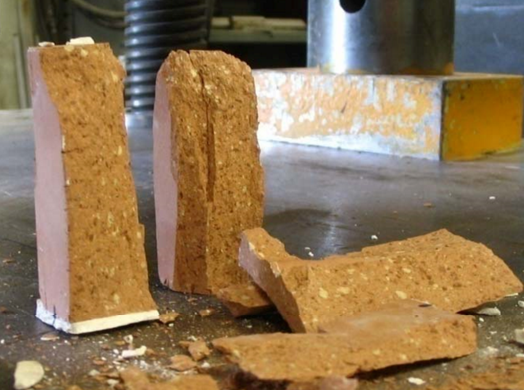L.M. Federico1, S.E. Chidiac2, and B. Cobbledick3
- PhD Candidate, McMaster University, Hamilton, ON, L8S 4L7, Canada, federilm@mcmaster.ca
- Professor, Center for Effective Design of Structures, Department of Civil Engineering, McMaster University, chidiac@mcmaster.ca
- Technical Director, Brampton Brick Ltd, 225 Wanless Dr, Brampton, ON, L7A 1E9, Canada, bcobbledick@bramptonbrick.com
ABSTRACT
Experimentation with fired clay brick is subject to certain limitations. Due to the size of experimental facilities and testing apparatus, as well as the cost associated with full scale production of multiple compositional variations for experimental purposes, it is often desirable to produce small scale specimens within a laboratory for use in large experimental programs. The properties of small scale fired clay brick specimens prepared in a laboratory vacuum extruder and fired in a small kiln are compared to the properties of full scale bricks produced in a large, automated plant. The effects of both the specimen production and firing method are investigated. The specimens are compared through testing of mechanical and physical properties including compressive strength, absorption, durability, and mercury intrusion porosimetry. Results indicate a significant effect of both production and firing method. The specimen size influenced the absorption, extrusion influenced porosity and durability, and firing location influenced the pore distribution and absorption.
KEYWORDS: brick; masonry; scale; firing; laboratory; extrusion; plant
A4-5



